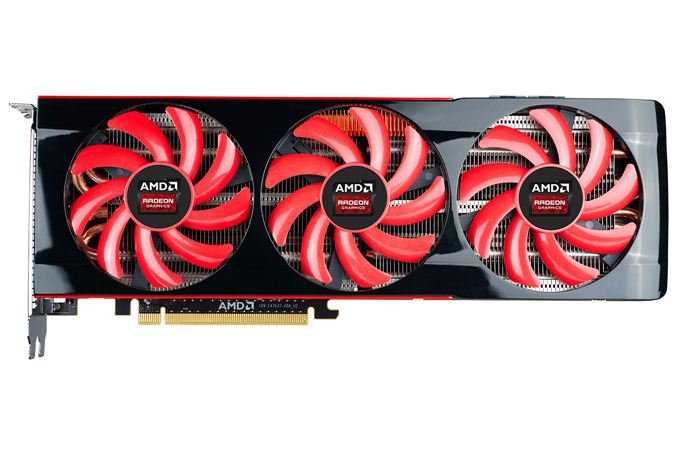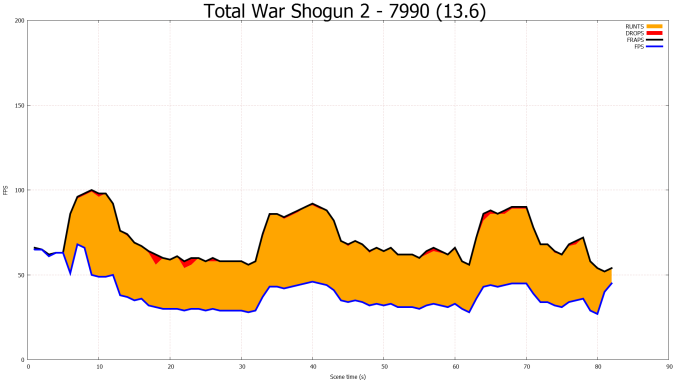AMD Frame Pacing Explored: Catalyst 13.8 Brings Consistency to Crossfire
by Ryan Smith on August 1, 2013 2:00 PM EST
In an off year that hasn’t seen too many new product releases thus far, this has been anything but a dull time. For the better part of a year now the technology journalist community – spearheaded by The Tech Report’s Scott Wasson – has been investigating the matter of frame pacing and frame timing on GPUs. In applying new techniques and new levels of rigor, Scott found that frames were not being rendered as consistently as we had always assumed they were, and that cards that were equal in performance as measured by frame rates were not necessarily equal in in performance as measured by frame intervals. It was AMD in particular who was battered by all of this work, with the discovery that both their single-GPU and multi-GPU products were experiencing poor frame pacing at times. AMD could meet (and beat) NVIDIA on frame rates, only to lose out on smoothness as a result of poor frame pacing.
Since then we have seen both some progress and some new revelations on these matters. AMD was very quick to start working on resolving their single-GPU issues, and by March when they were willing and able to fully engage the tech community, they had already solved the bulk of those single-GPU issues. With those issues behind them, they also laid out a plan to tackle the more complex issue of multi-GPU frame pacing, which would involve spending a few months to write a new frame pacing mechanism for their cards.
At the same time NVIDIA also dropped a small bombshell with the public release of FCAT, their long in development frame interval benchmarking tool. FCAT could do what FRAPS alone could not, capturing and analyzing the very output of video cards to determine frame rates, frame times, and frame intervals. Though FRAPS was generally sufficient to find and diagnose single-GPU issues, FCAT shed new light onto AMD’s multi-GPU issues, painting a far more accurate – and unfortunately for AMD more dire picture of Crossfire frame pacing.
Perhaps as proof that there’s no such thing as coincidence, since then we have seen the release of AMD’s latest multi-GPU monster, the Radeon HD 7990. Packing a pair of high clocked Tahiti GPUs, the 7990 was AMD’s traditional entry into the realm of $1000 multi-GPU super cards. A capable card on paper, the 7990 has been at the mercy of AMD’s drivers and lack of a frame pacing mechanism, with the previous revelations and FCAT results causing the 7990 to suffer what can only be described as a rough launch.
Ultimately when AMD engaged the community back in March they had a clear plan for addressing their multi-GPU frame pacing issues, developing a new frame pacing mechanism for their cards. AMD stated outright that this work would take a few months, something of an arduous wait for existing Crossfire users, setting a goal that the new frame pacing mechanism would “come in or around a July driver drop.” July has since come and gone by a day, but at long last AMD has completed their initial work on their new frame pacing mechanism and is releasing the first public driver today at 2pm ET as Catalyst 13.8 Beta 1.
As part of today’s launch activities, AMD seeded the beta driver to the press a week in advance to give us a chance to put it through the necessary paces, give AMD feedback, and write up about our experiences with the new driver. Over the next several pages we’ll be going over what changes AMD has made to their drivers, how they impact the 6 games we do frame interval testing with, and ultimately whether AMD has made sufficient progress in resolving their frame pacing issues. Make no mistake: AMD wants to get past these frame pacing issues as quickly as possible and remove the cloud of doubt that has surrounded the 7990 since its launch, making this driver launch an extremely important event for the company.











102 Comments
View All Comments
chizow - Saturday, August 3, 2013 - link
Written on the walls at AMD Driver HQ I'm sure, quickly referenced when questioned about microstutter being worst on CF.krutou - Friday, August 2, 2013 - link
BUT, BUT, BUT, RADEON PRO?!?LordOfTheBoired - Saturday, August 3, 2013 - link
Took them by the hand? Looks more to me like "waited until people cared, then released a benchmark to prove they didn't have the problem, while offering no constructive commentary."And the hell of it is... AMD's stance makes sense. This IS a market that hates VSync because ZOMG LAG. "The market" has made it ABUNDANTLY clear that they have no interest whatsoever in technologies that improve the visual experience at the (real or imagined) cost of responsiveness.
But apparently that's only true when there's the visual equivalent of a record skip on your screen and not when it's a subtle frame rate fluctuation. The former is a good thing because it means you "aren't lagged", the latter is a horrible thing because it means you "aren't lagged".
chizow - Wednesday, August 7, 2013 - link
@LordOfTheBoired - this is the type of indignant attitude that got AMD and their fans in this predicament to begin with.mikato - Wednesday, August 7, 2013 - link
Well one result of Nvidia releasing the software was to allow tech journalists to shine a bright spotlight on a problem of their competitor's products. Your "holding AMD by the hand" idea is pretty amusing.novastar78 - Wednesday, August 7, 2013 - link
What's sad is that AMD has ripped ATi to shreds to the point where they are spread pretty thin. Just getting a working product out the door is a task. You are being waaay too hard on them.They were using traditional methods to test and frankly it's not so unimaginable that they were caught by this. Granted, maybe it should have been caught sooner, but to demonize them or put them down for it seems a bit harsh.
They know now that it's a big problem are definitely committed to fixing it. You can clearly see that they are trying to stabilize the company and there is lots of turmoil. The moves they are making and the people being brought on board are a good sign. There is definitely a process change that needs to happen but when the tree is being shaken so many times too many apples can fall.
Give it some time, I think we will see great things form them over the next few years.
Wreckage - Thursday, August 1, 2013 - link
It did not help that certain people were claiming that AMD does not have a stutter problem.DanNeely - Thursday, August 1, 2013 - link
The problem is that AMD didn't think they had a stutter problem; or more precisely, until 3rd parties shoved the reality in their face they assumed (without testing) that they and nVidia had equal amounts of the problem.I suspect at one point in the past they were right; and that the genesis of nVidia's "years in the making" tool to measure the problem dates back to when they discovered it was a problem internally and began working on fixes so that they could announce the same tool at the same time that their drivers had a negligible impact from it. It'd be interesting to see what would happen if someone tested SLI card/driver configurations from a few years ago to see how well nVidia did at the time.
BrightCandle - Friday, August 2, 2013 - link
NVidia has had this fixed for a lot longer than that. The 680's were noticeably smoother on their release day compared to the 7970 crossfire. NVidia has claimed they have been fixing this since the 8800 and there is no reason not to believe them as HardOCP and other review sites have been noting the difference for years.HisDivineOrder - Friday, August 2, 2013 - link
Exactly. This has been a problem for as long as there has been Crossfire. I think a lot of people are so shocked by this fact (because some of them owned Crossfire and just dealt with it and didn't realize they were getting shafted) they can't accept it.Yes, you got reamed. Yes, for years, you were using Crossfire and suffering from microstutter when you needn't have to. Yes, AMD took you for a ride. It's so infuriating it drives people not to want to believe it because to believe it would be so horrible as to suddenly be intolerable.
Do what most people do. Just stick with nVidia since you know they do proper testing. Boycott AMD for a five year period and come back once you're sure AMD's got their act together.